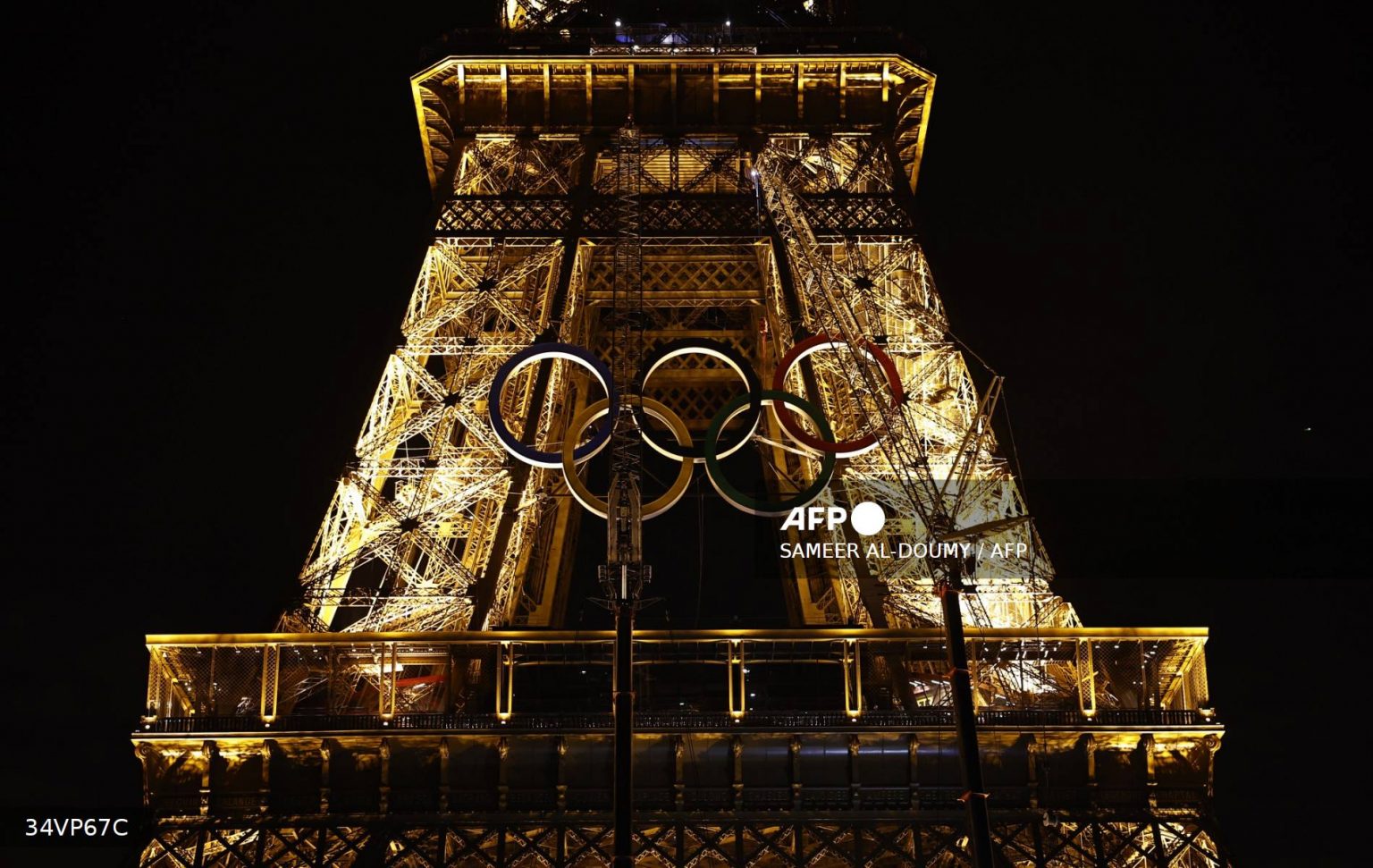
Countdown to Paris 2024: Olympic rings shine on Eiffel Tower
Paris displayed its rings atop the Eiffel Tower overnight as the 50-day countdown to the Olympics came to an end, and it did so on Friday morning.
After work on Thursday night, workers put the prefabricated steel rings together and hoisted the 29-meter-long, 30-ton emblem between the tower's two legs, somewhat over the ground floor.
According to Pierre Engel, an engineer at ArcelorMittal, the steel manufacturer that used recycled materials to make the rings, months' worth of testing and research went into making sure the procedure worked.
Every night, lights will be turned on inside the nine-meter-diameter circles.
Thierry Reboul, the director of events and ceremonies for the Paris organising committee of the Olympic Games, said, "It will be one of the images of the Games."
In Paris, the five rings are only found on the exterior of two other buildings.
The Olympic and Paralympic swimming competitions will take place at the Paris La Defence Arena in the suburban Nanterre area. Earlier this week, the rings were also raised there.
Because it featured swimming at the 1924 Games, the Georges-Vallerey pool, a training location for these Games, has been showing off the rings for a long time.
The Summer Olympics in Paris in 2024 are scheduled for July 26–August 11, 2024.
One of the most recognisable images in the world, the Olympic rings stand for the variety and cohesion of the Olympic movement.
Five overlapping rings in the following five hues make up the design: blue, yellow, black, green, and red.
Following the installation, French National Police officers stand watch in front of the Eiffel Tower | AFP
There is white background behind these rings. Every nation in the globe has at least one of these colours on its national flag, which is why these colors—including the white background—were chosen for the rings.
The creator of the current Olympic Games, Pierre de Coubertin, created the rings in 1913. They stand for both the worldwide athletes' reunion at the Olympic Games and the unification of the five inhabited continents (Africa, the Americas, Asia, Europe, and Oceania).
They spread the Olympic ideals of world peace and harmony.





